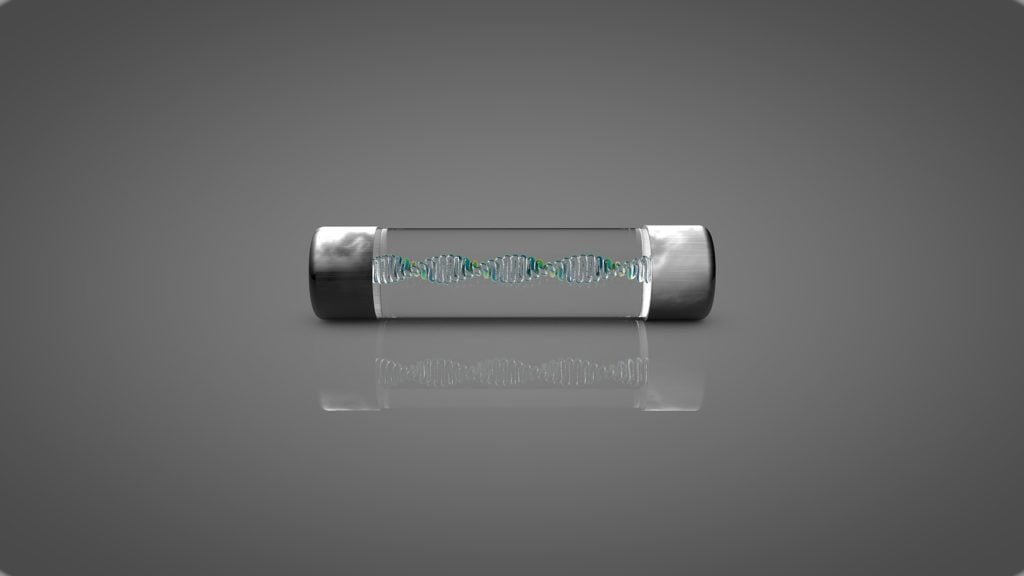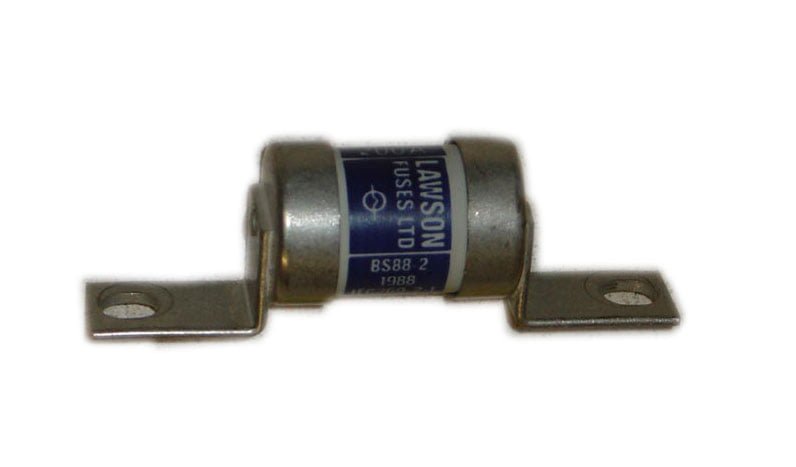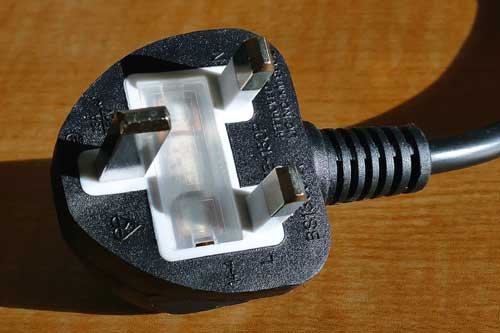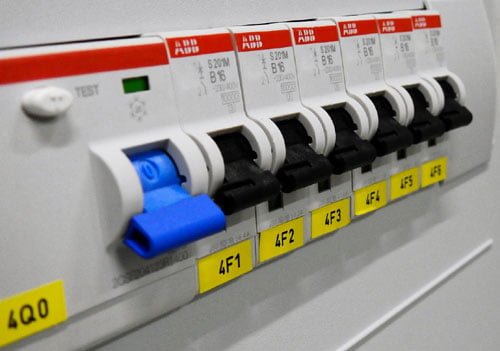An electrical fuse is the simplest current-interrupting device for protection against excessive current.
As explained earlier in our previous article protective devices, and electrical installation must be safeguarded against the harmful effects of excessive current. This excessive current may be caused by overloading or short circuit faults. A protective device such as a fuse is necessary.
A high electric current leads to an excessive heat rise which, if near to inflammable material will almost certainly cause an outbreak of fire.
In all such cases, therefore it is necessary to interrupt these excessive currents before they cause any damage. This is where fuses, circuit breakers, and other forms of protection come into use.
What is an electrical Fuse?
An electrical or electronics fuse usually called a fuse is a small piece of metal connected between two terminals that melts when abnormal or excessive current flows through it.
The thin layer in the fuse that melt and open the electrical circuit path under abnormal condition is called the fuse element. The rating or the capacity of the fuse depends on the type and size of the fuse element used.
Electrical fuses operate based on the heating effect (I2*R) of electric current. That is the square of the amount of current I in amperes flowing through the resistance R of the fuse element measured in ohms. This yields power loss in the form of heat which in turn causes the fuse element to melt. One common operation attribute of fuses is that they are normally wired in series with the circuit to be projected.
Related posts available sirboatengonline.com
The material used for the Electrical Fuse Element
Different types of metals can be used to manufacture fuse elements for different applications. However, metals with low melting points like tin, lead, zinc, or lead-tin alloys are found more suitable for this purpose. Normally, lead-tin alloy wire is used below 10 amperes while copper wire is most suitable for higher currents. The present trend, however, is to use silver for higher currents despite its higher cost as it is comparatively free from oxidation.
Types of Electrical Fuses.
In practice, there are three main types of electrical fuses. These are; the rewirable fuse, the cartridge fuse, and the high–rupturing–capacity (h.r.c.) fuse.
The rewirable Electrical fuse
The rewirable electrical fuse sometimes called a semi-enclosed fuse is a simple and comparatively cheap system of over-current protective devices. The fuse element consists of a short length of fuse wire of diameter depending upon the current rating of the circuit the fuse is protecting.

The wire is threaded through a small hole in the porcelain or ceramic fuse carrier (bridge) and secured to the contacts (terminals) using screws. It also has a separate holder called the fuse base which holds the fuse carrier.
The incoming and outgoing live or phase wires are also connected permanently with the help of connecting terminals to the base. After blowing off the element during a fault condition, the carrier can be pulled out and again rewired with a new fuse wire. Thus, restoring service very quickly with negligible additional expenditure.
Applications of rewirable fuse
Commonly used in domestic installations and some circuits where very low fault currents are to be handled.
Advantages
- They are relatively cheap
- They are easy to repair
- Electrical service to consumers can be restored very quickly.
.
Disadvantages
- Cannot be used for high fault current. This is because the fuse bridge and base can easily get damaged under very heavy to short-circuit conditions.
- Protection is not reliable. This point is proven by the fact that the fuse element can easily be rewired with an incorrect gauge, especially by inexperienced people.
- Since the wire is exposed to air, it is subjected to deterioration due to oxidation caused by heating.
- Relatively slow in interrupting fault current (slow speed of operation).
- Risk of fire – hazards due to external flash on blowing.
- It cannot discriminate between sudden high current (as in the case of starting heavy motors) and a continuous faulty condition.
The cartridge Electrical Fuse
With the increase in fault current level, the fuse clearing the fault would be called upon to withstand extremely heavy stresses in the process. A rewirable fuse would not be able to withstand these stresses and would probably disintegrate violently. This and perhaps all the disadvantages of using rewirable fuse led to the development of the cartridge fuse.

The cartridge fuse consists of a porcelain carrier tube with metal caps to which the fuse element is attached internally. The porcelain tube is filled with silicon and oxygen (silica). Since the fuse element is enclosed, the entire fuse enclosure has to be replaced with one of the same rating (as determined by the manufacturer) when it blows. They are mostly found in modern electrical plug tops used with 13A socket outlets and inside consumer electronic machines.
Application
They are gradually replacing the rewirable fuse in modern domestic installations. Especially power intake from the regular 13A socket. They are also used as the protective device for many modern electrical appliances such as electric iron, electric cooker, microwave oven, etc.
Advantages
- Being closed, there is no or less prone to deterioration of the electrical fuse element
- Protection is reliable because the blown fuse is likely to be replaced by the same rating.
- High-speed operation. They remove fault current faster
- Ability to interrupt high fault current.
- Interrupt silently and without flame, gases, or smoke. Hence safe from fire hazards.
Disadvantages
- This fuse is not recommended for use in places prone to electrical faults.
- It is expensive to replace as compared to the rewirable fuse.
- Delayed in the restoration of service if there is no available cartridge at the time of interruption.
- Overheating of the adjacent contacts is possible during the operation of the fuse.
High Rupturing Capacity (H.R.C)
Sometimes called the enclosed fuse, the high rupturing capacity is a type of cartridge fuse, specially designed for extremely rapid operation with heavy electrical loads. High rupturing capacity fuses were introduced as a result of the increased number of electrical installation networks which also increased the electricity demand.

Application
They are particularly used in industrial installations. They are also frequently used in low-voltage distribution systems.
Advantage and Disadvantage
As compared to the rewirable electrical fuse, the high rupturing capacity fuse has the same advantages and disadvantages as a standard cartridge fuse in addition to exhibiting the capacity to withstand heavy fault currents.
Read Also: Miniature and GFCL circuit breakers (Principles and Operations)
What are the disadvantages of using fuses?
As we have already discussed, fuses are commonly used in electrical systems as a means of protection against overcurrents and short circuits. While they are an effective and widely used solution, there are also some disadvantages to using fuses.
One major disadvantage is that fuses are a one-time use component. Once a fuse blows, it must be replaced in order for the circuit to be restored. This can be inconvenient and time-consuming, especially in situations where the fuse is located in a hard-to-reach area or the replacement fuse is not readily available.
Another disadvantage is that fuses can be unreliable. They may not always blow at the appropriate time, either due to manufacturing defects or environmental factors such as temperature and humidity. This can lead to damage to the electrical system or even fire hazards.
Fuses also have limited current protection capabilities. They are typically rated for specific current levels and are not suitable for applications that require a wide range of current protection.
Additionally, fuses can be costly, especially when compared to circuit breakers, which can be reset after tripping and have a longer lifespan.
It’s worth noting that fuses are only one option for electrical protection and that there are other alternatives such as circuit breakers, that can be more suitable depending on the specific application.
What is the Advantage of using an Electrical Fuse?
Fuses are an essential component in electrical systems, providing protection against overcurrents and short circuits. They are widely used in residential, commercial, and industrial settings to protect electrical equipment, wiring, and appliances. In this blog post, we will discuss the advantages of using fuses in electrical systems.
- Safety: One of the main advantages of using fuses is safety. Fuses are designed to protect against overcurrents and short circuits, which can cause damage to electrical equipment, wiring, and appliances. They also protect against fires caused by electrical malfunctions.
- Reliability: Fuses are a reliable form of overcurrent protection. They are designed to open the circuit when the current exceeds a certain level, protecting the electrical equipment, wiring, and appliances from damage. This means that fuses can help to prolong the life of your electrical equipment and appliances.
- Cost-effective: Fuses are relatively inexpensive compared to other forms of overcurrent protection. They are easy to install and replace, and they do not require any special tools or equipment. This makes them a cost-effective solution for protecting your electrical equipment and appliances.
- Easy to Identify: Fuses are easy to identify when they have blown. A blown fuse will have a visible break in the wire inside it. This makes it easy to determine whether a fuse needs to be replaced, without having to test the circuit with a multimeter.
- Energy efficiency: Fuses can help to improve the energy efficiency of your electrical system. When a fuse blows, it will open the circuit, which will stop the flow of electricity to the electrical equipment or appliance that is causing the problem. This means that the electrical equipment or appliance will no longer be consuming power, which can help to reduce your energy costs.
- Variety of sizes: Fuses come in a wide variety of sizes, from very small to large, which allows them to be used in a wide range of applications. They can be used in everything from small electronic devices to large industrial machines.
Conclusion on Electrical Fuse
In conclusion, fuses are an essential component in electrical systems, providing protection against overcurrents and short circuits. They are safe, reliable, cost-effective, easy to identify, energy-efficient, and come in a variety of sizes. If you are looking for a way to protect your electrical equipment and appliances, consider using fuses. Always use the correct size and rating of the fuse for the application, to ensure optimal protection.
However, while fuses are a widely used and effective solution for protecting electrical systems against overcurrents and short circuits, they do have some significant disadvantages such as being a one-time-use component, unreliable, having limited current protection capabilities, and being costly. It’s important to consider these disadvantages when deciding whether to use fuses in a particular application and to weigh the pros and cons against alternative options such as circuit breakers.






Hi, I was wondering if you could explain this “ After blowing off the element during a fault condition, the carrier can be pulled out and again rewired with a new fuse wire. Thus, restoring service very quickly with negligible additional expenditure.”
the statement has to do with the rewirable fuse. When there is a fault condition and the fuse blows or melts, you can just rewire it with a strand of thin conductor and put it back unlike the cartridge fuse that needs complete replacement.
Good evening, the textbook you recommended looks more advance for new students?
Which textbook? Do you mean John Bird? If you consider John Bird as more advanced for new students, then I am afraid I don’t know where to point you again, please. John Bird really covers everything and it does so with a detailed awesome explanation.
Sir please is it advisable to mix a high breaking capacitor with a semi enclosed fused in an installation.
Mixing different types of fuses in an installation can lead to unpredictable results and compromise safety. While some installations may permit that, mixing a high-breaking capacity fuse with a semi-enclosed fuse is generally not advisable. Consistency in fuse types ensures proper protection and reduces the risk of electrical hazards.